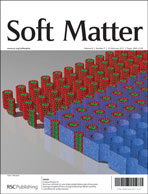We have tracked the structural evolution of the monoolein bicontinuous cubic phase under in meso crystallogenesis conditions. Significantly, all measurements have been carried out in situ within a crystallisation plate reproducing the exact conditions during a crystallisation trial. The structure of the MO cubic phase, doped with a small concentration of amyloid-beta peptide, was measured 1 day, 5 days, 7 days and 21 days after addition of PACT crystallisation screen, which systematically varies cation, anion, pH and polyethylene glycol (PEG). The components of the screen had a significant impact on the structure of the cubic phase. We have rationalised the structural variation with respect to the effect of the individual screen components. Specifically addition of higher Mw PEG effected a transition from a diamond cubic phase (QIID) to a gyroid cubic phase (QIIG) across the majority of the plate and the QIIG phase became more prevalent with time. The effect of individual salts was correlated with their position in the Hofmeister series. Changes in pH and buffer system had a more minor effect on mesophase structure. We have discussed the implications of the observed structural changes with respect to the putative mechanism of protein crystal growth within a lipidic cubic phase.

You have access to this article
 Please wait while we load your content...
Something went wrong. Try again?
Please wait while we load your content...
Something went wrong. Try again?


 Please wait while we load your content...
Please wait while we load your content...